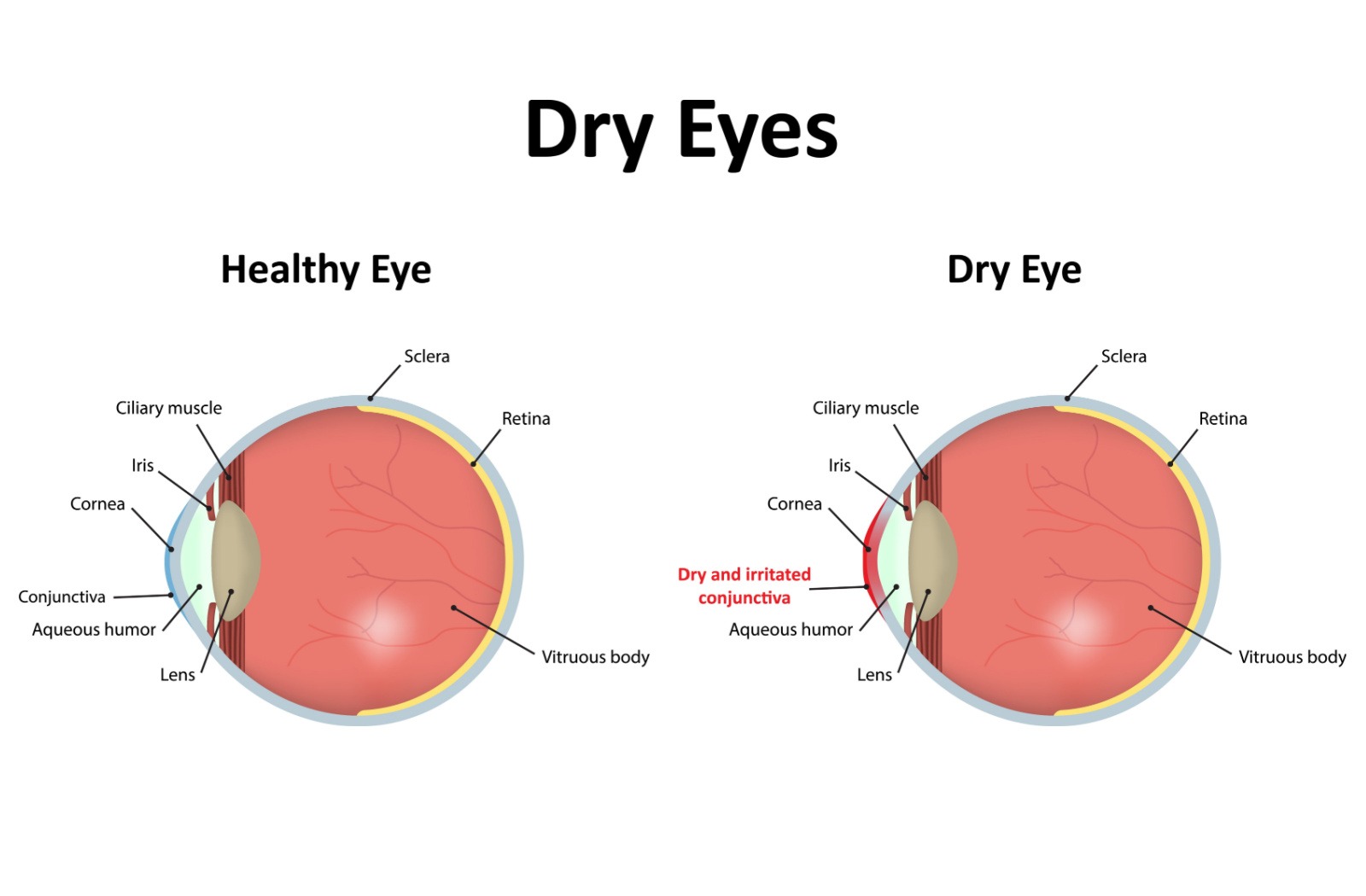Do you often find yourself rubbing your eyes frequently? Are you experiencing a burning sensation, eye fatigue, or redness? These are a few signs that you might be struggling with a common condition known as dry eye.
Dry eye symptoms are widespread and can be caused by several factors, including other eye conditions, like digital eye strain. If not appropriately cared for, dry eye can lead to severe complications for your long-term well-being.
Dry eye syndrome often appears alongside several chronic, uncomfortable symptoms and can come in different forms based on the underlying causes of those symptoms.
Our doctors at Specialty Eye have extensive experience and training in identifying which type of dry eye you’re experiencing and developing a treatment plan to help improve your eye health and relieve irritating symptoms. Our quiz can help you determine when to talk to us about your symptoms.

What Is Dry Eye Syndrome?
Dry eye syndrome, also known as dry eye disease or simply dry eye, is a condition that occurs when your eyes don’t produce enough tears or the quality of your tears is not sufficient to keep your eyes moist and lubricated.
Your tear film is a mixture composed of 3 distinct layers: the top oil layer, the middle water layer, and the innermost mucus layer. Tears are essential for maintaining eye health, as they nourish your cornea, remove debris from your eye, and keep your eyes moist. Without tears, your eyes can become dry, scratchy, and irritated, leading to a range of uncomfortable symptoms.
While dry eye syndrome may seem like a minor issue, it can significantly impact a person’s life, including work productivity and long-term quality of life.
Evaporative Dry Eye
The first common type of dry eye syndrome is evaporative dry eye, which is typically caused by meibomian gland dysfunction (MGD) and is the leading form of dry eye disease.
Meibomian glands are located in the eyelids and produce an oily substance that helps stop tears from evaporating too quickly. When these glands become clogged or fail to produce enough oil, your tears may evaporate rapidly, causing dryness and irritation.
Factors that can contribute to meibomian gland dysfunction include:
Aging
Hormonal changes
Environmental factors
Underlying health conditions
To manage evaporative dry eye, we may recommend a variety of solutions, from at-home strategies like warm compresses and eyelid scrubs to in-office treatments like LipiFlow that can unclog the meibomian glands and help improve oil production. You may also need artificial tears or lubricating eye drops to relieve your symptoms.
Aqueous Tear Deficiency Dry Eye
The second common type of dry eye syndrome is aqueous tear deficiency dry eye. This occurs when the lacrimal glands in the eyes fail to produce enough tears to keep the eyes moist, causing dryness and discomfort.
Factors that can contribute to this type of dry eye include:
Aging
Certain medications
Medical conditions like Sjögren’s syndrome or rheumatoid arthritis
Tear gland damage
To manage aqueous tear deficiency dry eye, we may recommend a variety of options that can help increase tear production, including in-office treatments, prescription eye drops, or ointments.
Dry Eye Symptoms
If you score high on our dry eye quiz, that may indicate you’re experiencing symptoms of dry eye.
Recurring dry eye symptoms often include eye irritation and dryness, grittiness, burning, blurriness, light sensitivity, and contact lens discomfort.
Gritty or Scratchy Sensations
A gritty or scratchy sensation is a common dry eye symptom. It may feel like sand or dirt is stuck in your eyes. This sensation often occurs because your eyes lack the necessary hydration to keep them lubricated and comfortable, and your tears can’t effectively wash away particles.
Burning & Irritation
Burning and irritation are both common symptoms of dry eye. You might feel a burning sensation in your eyes triggered by wind, smoke, or prolonged screen time. Long-term eye irritation can make it difficult to focus on tasks that require clear vision and prolonged focus.
Blurry Vision
Dry eyes can cause blurry vision, making reading, driving, or performing other visual tasks difficult. If left untreated, dry eye syndrome can also cause watery eyes, which can have further effects on vision.
Light Sensitivity
If your eyes are sensitive to light, you might have dry eye syndrome. This sensitivity can cause discomfort or pain when your eyes are exposed to bright lights, such as sunlight or fluorescent lights. Sunglasses or lubricating eye drops may help reduce the effects of light sensitivity.
You may also experience difficulty driving at night as a result of light sensitivity caused by dry eyes.
Uncomfortable Contact Lens Wear
When you wear contact lenses with dry eyes, your eyes may feel scratchy or irritated. In severe cases, continuing to wear the wrong type of contact lenses can cause corneal abrasions, infections, or ulcers.
At Specialty Eye, we have experience helping those with conditions like dry eyes find the right specialty contact lenses for their needs. In addition to providing dry eye treatments, we can also use our expertise to help you find contact lenses that suit your unique needs for dry eye relief and clear vision.

Take Our Dry Eye Quiz to Get Started
Dry eye syndrome can be frustrating and uncomfortable, but with the right management and treatment, you can alleviate your symptoms and enjoy clear, healthy vision.
At Specialty Eye, dry eye treatment is one of our unique areas of focus, and we’re committed to helping our patients find the right solution for lasting relief. Take our dry eye quiz and schedule an appointment with our optometrists to learn more about what you can do to manage and prevent symptoms—and how we can help. With a proactive approach and a commitment to good eye health, you can protect your eyes and vision.

